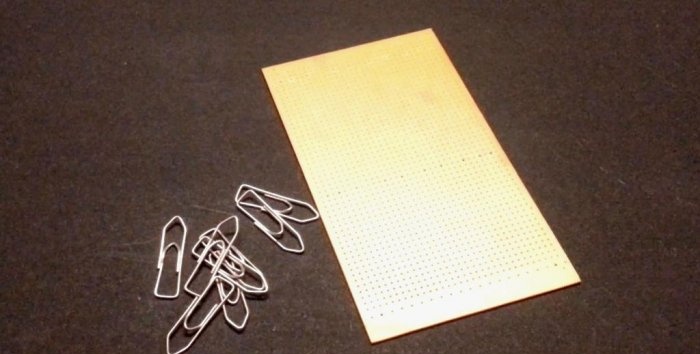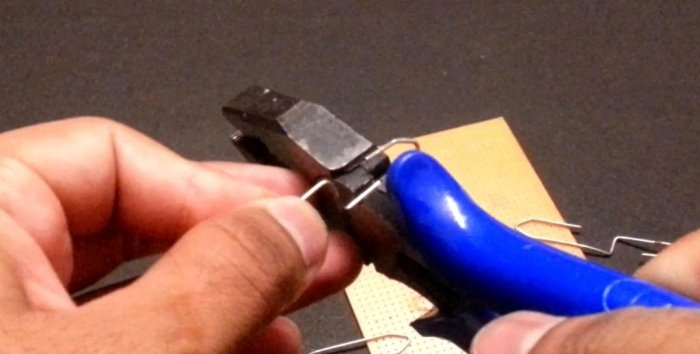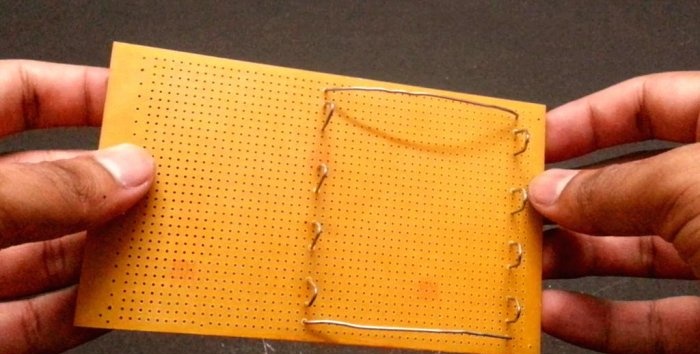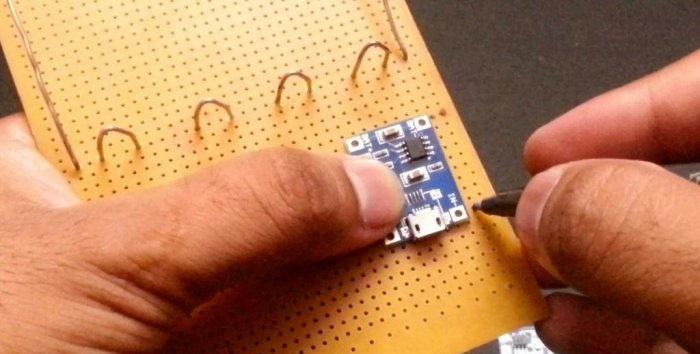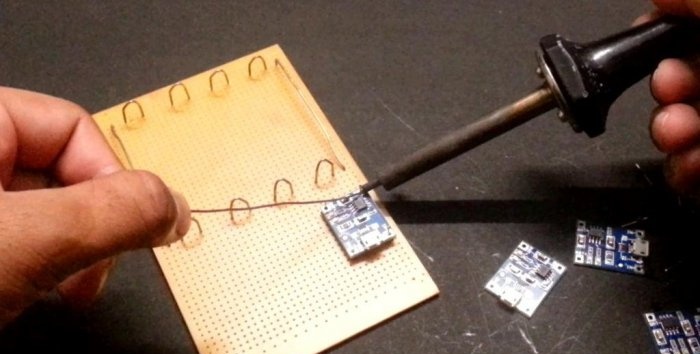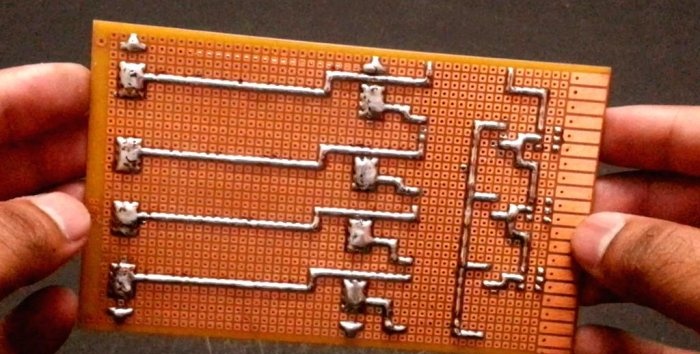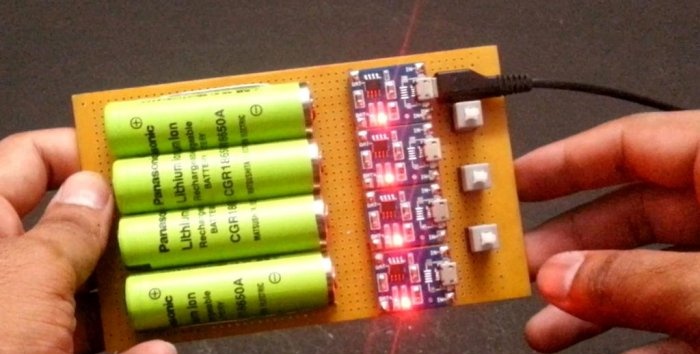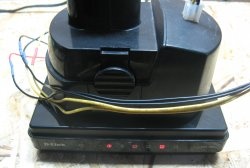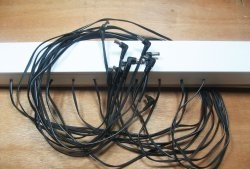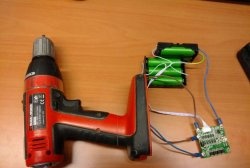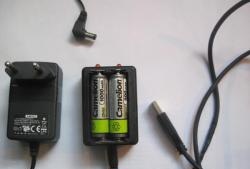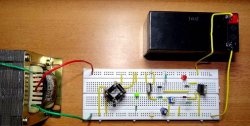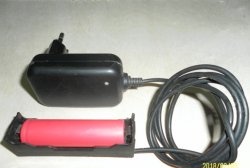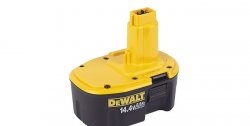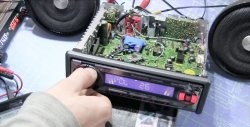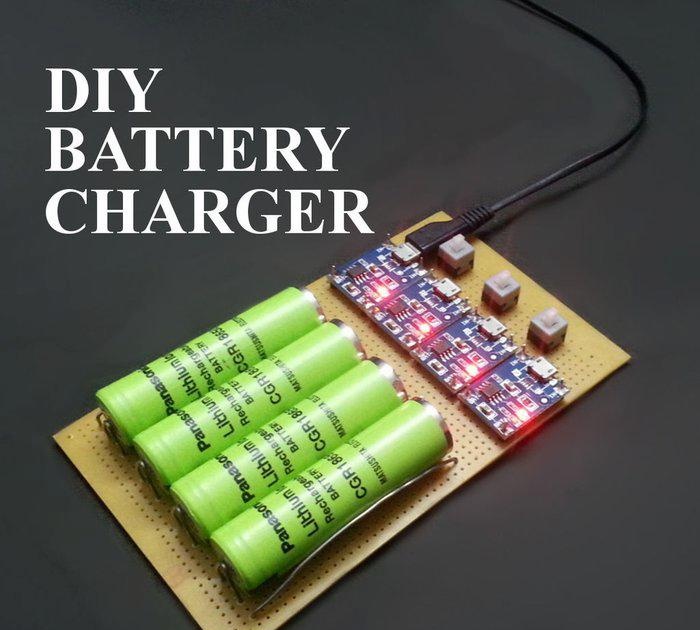
I made myself a charger for four lithium-ion batteries. Someone will now think: well, he did it and did it, there are plenty of them on the Internet. And I want to say right away that my design is capable of charging either one battery or four at once. All batteries are charged independently of each other.
This makes it possible to simultaneously charge batteries from different devices and with different initial charges.
I made a charger for 18650 batteries, which I use in a flashlight, powerbanks, laptop, etc.
The circuit consists of ready-made modules and is assembled very quickly and simply.
Will need
- Charge controller with microUSB TP4056 - 4 things.
- PLS pin 2.54 connector.
- Locking button - 4 things.
- Paper clips.
- Printed circuit board.
- 18650 battery.
Manufacturing a charger for different numbers of batteries
First we'll make the battery compartment. To do this, we take a universal circuit board with a large number of holes and ordinary paper clips.
We bite off these corners from the paper clips.
We insert it into the board, having previously tried on the length of the batteries you need.Because such a charger can be made not only for 18650 batteries.
We solder parts of the paper clips to the bottom of the board.
Then we take the charging controllers and place them on the remaining space on the board, preferably opposite each battery.
The charging controller will be mounted on these legs, made from a PLS connector.
Solder the module on top and to the board below. These legs will carry the power current to the module and the charging current to the batteries.
Four sections are ready.
Next, to switch charging points, we will install buttons or toggle switches.
The whole thing connects like this:
You may ask - why are there only three buttons and not four? And I will answer - since one module will always work, because one battery will always be charged, otherwise there is no point in plugging in a charger at all.
We solder the conductive tracks.
The result is that with buttons you can connect a place to charge from 1 to 4 batteries.
Installed on the charge module Light-emitting diode, which shows that the battery that is being charged from it is charged or not.
I assembled the entire device in half an hour. It is powered by a 5-volt power supply (adapter), which, by the way, also needs to be chosen wisely so that it charges all four batteries at once. The entire circuit can also be powered from a USB computer.
We connect the adapter to the first module, and then turn on the necessary buttons and the voltage from the first module will go to other places, depending on the switches that are turned on.
